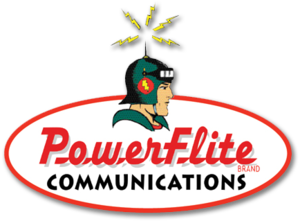What Exactly is a Brand?
/There are a few ways to define the term “brand,” starting with a symbol used by a person, company, or other organization to assert ownership of something. In the livestock industry, of course, a ranch burns its brand – its symbol – into the hides or horns of livestock it owns, including horses, cattle, sheep, etc. to signify ownership. It’s a strategic, clearly defined process that protects both the animals and the owners, with origins traceable as far back as ancient Greece.
Today, that tradition has been extended to packaged products, trademarked systems, and companies in every industry being offered with a brand now executed as a logo and brand position to signify its ownership, including ownership of any proprietary processes or ingredients that go into creating that product. Executing it with a red-hot iron is less frequent in non-livestock situations, but is…an option.
A brand, however, goes well beyond that physical claim. It’s bigger in that your brand is also what people think of the moment they hear the name or see the symbol representing a particular product, company, country, or person. That is, your brand is what you are known for in the world – part reputation, part expertise, part factual history, part public claims, and more. For that reason, you can influence what your brand is in the world, but you can’t actually control it. Even those ranches that literally burn their symbol onto calves’ hips can’t control what their brand is in the minds of people with whom they interact, but they can influence it.
For example, companies spend heavily on advertising to influence what people think of their branded consumer goods, whether the product is toothpaste, beer, a car, a cell phone, paper towels, and so on. Ultimately, though, a product’s true brand – what people think of when they think of it – is formed based on a combination of user experiences, ads, product reviews, price, customer service, availability in the marketplace, and even real-world events like the Tylenol poisonings or the gas tank explosions of a very popular U.S. automobile.
It’s also notable that how a company or person responds to real-world events also influences what the brand will be. Tylenol is still popular today – and has even expanded its product line – because when those poisonings happened, the makers of Tylenol showed empathy from day one, cooperated with investigators, was cleared of wrongdoing, and changed its packaging to prevent future occurrences. The automaker, on the other hand, tried to downplay the explosions, lied about when designers knew about the problem, and blamed the drivers who rear-ended the exploding cars. As a result, that company’s brand – and sales – were hurt badly, they had to defend against lawsuits, and the model’s brand name became so toxic it had to be dropped from the line-up and hasn’t been revived even decades later.
In the end, a solid, trustworthy brand is usually the result of a good, dependable product design or honorable provision of services, telling the truth, being as helpful as possible under current conditions, and advertising its story with a positive attitude. Of course, any of these elements can come undone in many ways, and some people and companies don’t want their brand to be “solid and trustworthy,” but more like adventurous, care-free, sexy, fashionable, fun, affordable, crafty, super-patriotic, financially smart, religious, etcetera. While you can’t control what your brand will be to everyone, the first step in influencing what that will become is to decide what you want it to be.

